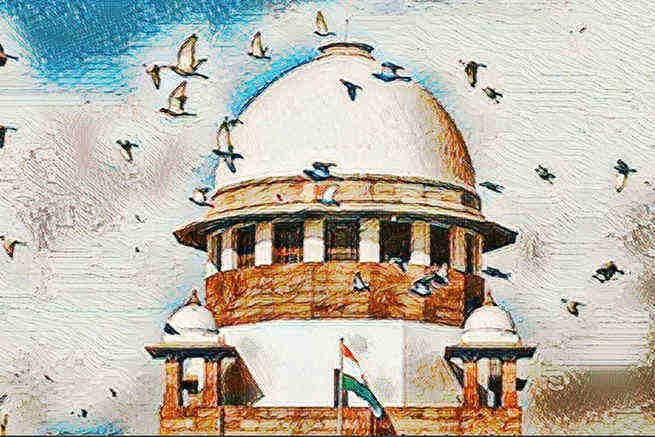
The Supreme Court on Tuesday refused to intervene in the on-going demolition drive by Karnataka government against illegal hotels, guest houses and restaurants in Virupapura Gaddi, an oval islet formed by the Tungabhadra river on the west of the Hampi World Heritage Site.
A bench of Justices Mohan M Shantanagoudar and R. Subhash Reddy, after the matter was mentioned before it, said: "We would not utter a word...we have already given them (authorities) one month time."
Advocate Sanjay M. Nuli, orally mentioning the matter before the bench, submitted that the authorities were recklessly carrying out the demolition activities since early Tuesday. He also cited the pendency of the review petition against the February 11 verdict, and sought that the authorities should halt the activities till final word on the matter.
This argument did not move the bench.
"We ourselves have passed the judgement (on the matter)," Justice Shantanagoudar said, citing gross illegalities in rampant constructions in the area.
On February 11, the top court had directed the Karnataka authorities, within a month, to demolish illegal restaurants, hotels and guest houses constructed in Virupapura Gaddi.
The apex court had also restrained any other court against intervening in its decision on the matter, in the backdrop of submissions made by counsel appearing for Hampi authorities that a single-judge bench of the High Court had stayed the demolition work by passing an order. Later, this order was suspended by the division bench of the High Court.
The apex court had dismissed a clutch of appeals filed by Sakkubai and others against the Karnataka High Court judgement passed on April 27, 2015.
This judgement identified the area falling under the core zone of the heritage area and made this a ground for the authorities to go-ahead with the demolition of the illegal structures. The High Court noted the construction by the aggrieved parties in the form of huts and building, on their land, was purely commercial in nature -- hotels, restaurants, and guest houses. "Clearly, these constructions were in violation of Section 20(1) of the Mysore Ancient and Historical Monuments and Archaeological Sites and Remains Act, 1961," said the court.


.jpeg)

